|
Morden Hall to Colliers Wood, Walk (part 3)
Merton Abbey Mills and Colliers Wood
(Photos/words © urban75, 12th January, 2008)
The short walk continues along the Wandle, into Abbey Mills and on to Colliera Wood.
View the route in Googlemaps  here. here.
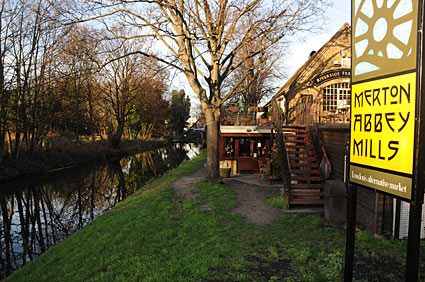
Housed in the former Liberty silk-printing works on the River Wandle, Merton Abbey Mills bills itself as 'London's alternative Market,' offering shops, a riverside pub, teahouse and pizza restaurant and a craft village.
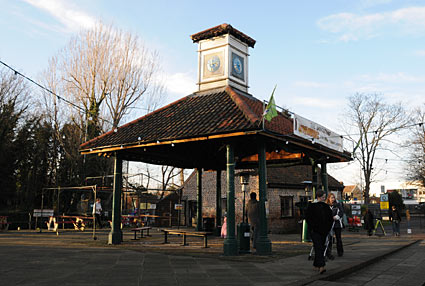
Bandstand with clock tower.
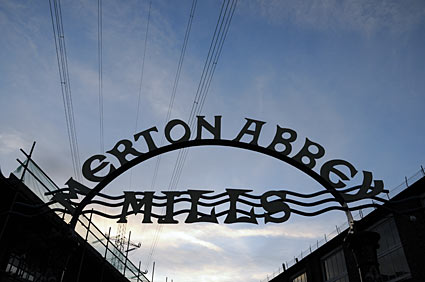
Metal sign with electric cables overhead.
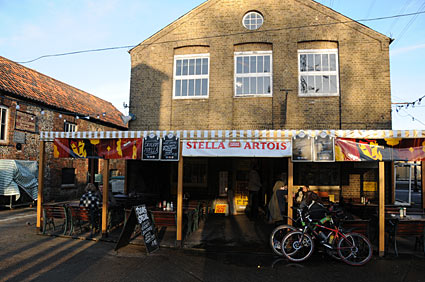
This excellent licensed cafe is open from 7.30am to 5pm Mon-Friday and 8-5pm on weekends.
We scoffed a reviving cup of char and a lovely Welsh Rarebit.

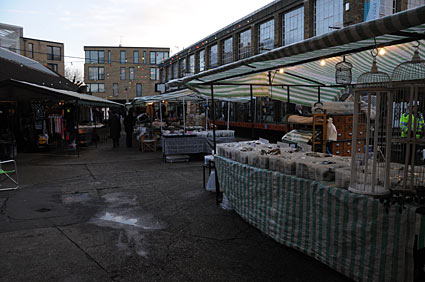
There's a craft market every Saturday and Sunday, and an antique and collectors market every Thursday.
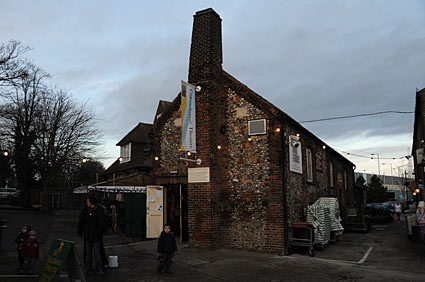
The Colourhouse Theatre is most ancient building in the Abbey Mills site, and it is reckoned to be the only remaining part of the medieval Merton Priory.
The department store Libertys used the building to mix their dyes for silk printing until the 1970s (hence the theatre name), and since 1995 it has served as a miniature theatre, staging over 2,000 drama performances and more than 400 concerts.
The theatre is set to become the world's first theatre to be powered exclusively by wind energy, thanks to the installation of a ground based wind turbine.
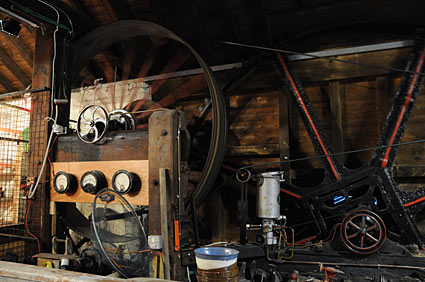
Inside the the historic Wheelhouse.
The River Wandle once buzzed with industry, with nearly 100 watermills working on the River Wandle around 200 years ago.
Only four now still survive, and this one at Merton Abbey Mills is the only watermill in fully restored working order.
The wheel now powers a potter's wheel - the only one in the country directly driven by water power - generates electricity, and powers other machinery including a lathe and its own self-lubricating device. Which sounds a bit kinky.
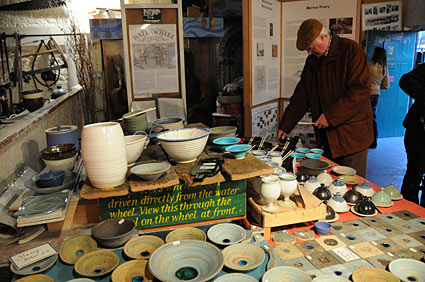
The pottery made at the Wheelhouse is sold inside.
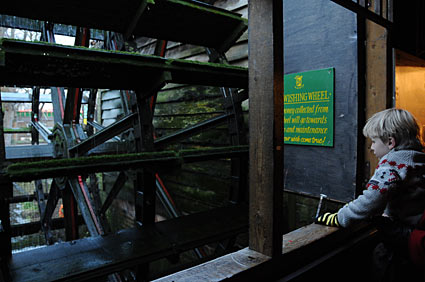
Watching the wheel.
The current 'undershot' mechanism dates from 1885, and was originally used by Libertys to rinse the gum off the printed silk.
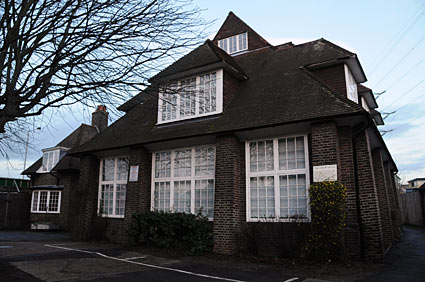
The 1912 Show House in the Arts and Crafts Movement style.

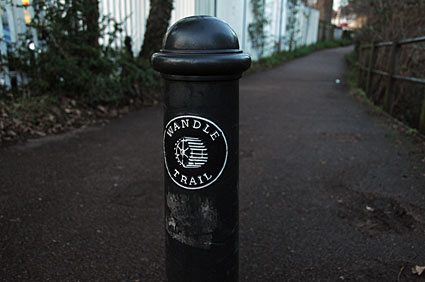
We picked up the Wandle Trail after passing Merton Abbey Mills..
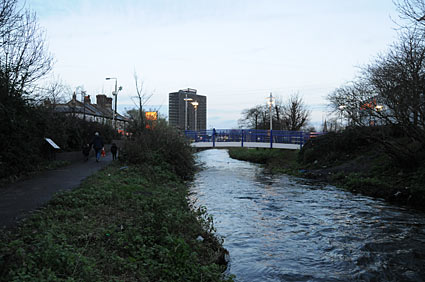
Walking into Colliers Wood - the wood that gave the town its name vanished under the expanding urban sprawl some time in the mid-1890.
A huge Sainsburys dominates the area, with a useful but butt-ugly industrial park offering a range of mega stores like Currys and Land of Leather.
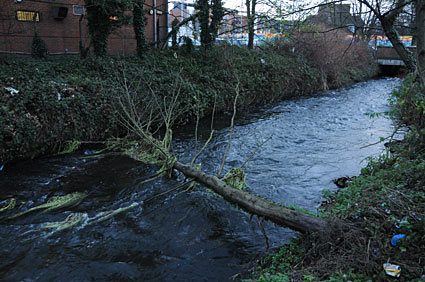
The heavy rainfall of the past few days had caused substantial subsidence on the path by the River Wandle, and this tree had fallen in to the river.
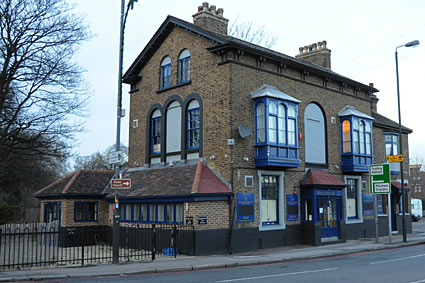
There's not much to look at architecturally on the stretch to the tube station, but this Victorian building was stunning. It's now used as a restaurant by a company who have an undecipherable squiggle for a logo.

A spectacularly ugly dirty concrete tower block provides an eyesore visible throughout Colliers Wood.
Imaginatively entitled the 'Colliers Wood Tower' the hideous beast was originally known as the 'Lyon Tower' after its original occupants, property company Ronald Lyon Holdings.
During construction, a major error was found forcing the builders to demolish the three floors already built and start all over.
Most residents wish that they'd left it flattened - it's awfulness has become so legendary that it was voted the ugliest building in London in a 2006 BBC poll and one of the 12 ugliest in the UK in Channel 4's Demolition programme in 2005.

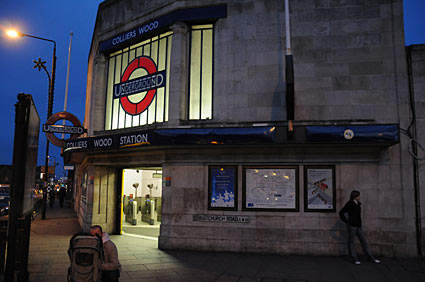
Designed by Charles Holden and opened on 13 September 1926, the Northern Line station at Colliers Wood is attractively finished in white stone and dominated by a large glass 'Underground' sign.
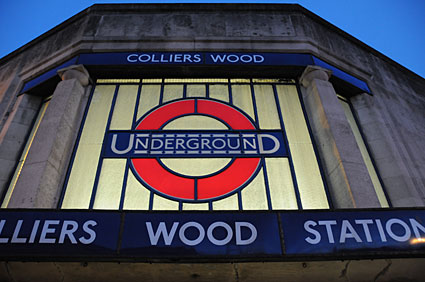
Detail of the glass 'Underground' sign.
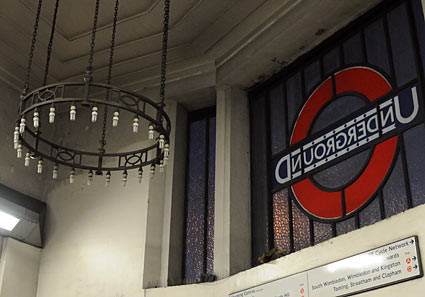
Inside the booking hall can be seen this extravagant metal candelabra, although it has to be said the energy saving lamps don't quite show it off at its best (they look like pegs, making the fitting look a bit like a rotary washing line.

« London features
|

